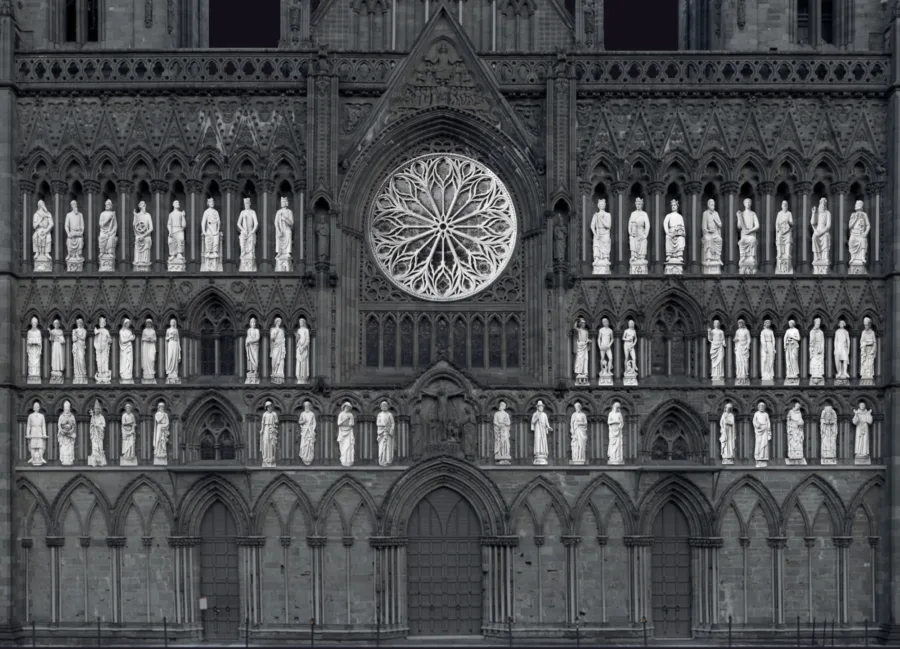St Clement
Slave labour made St Clement the patron saint of stonemasons.

Clemens Romanus was born in Rome at some point in the mid-first century CE. Although he was a real person, little is known about his life and he has also been confused with other people. It is possible that he was the son of a freed slave and that he was brought up as a pagan. After hearing a sermon given by St Barnabas the Apostle, he converted to Christianity. St Peter is said to have appointed him as his successor and he went on to become the fourth pope.
In one version of the story, Clement was exiled from Rome by the emperor Trajan and sent to work as a slave at a quarry in Crimea. There he continued to spread the Christian faith, which was not well received by the emperor. He was therefore cast into the sea with an anchor around his neck. His friends stood watching on the shore, praying to God that he would be saved. Miraculously, the sea parted and a church that the angels had built was revealed. This miracle is said to have repeated itself every year on the anniversary of the martyr’s death.
St Clement had a strong position in the Nordic church in the Middle Ages. The first church built in Trondheim around 997 was dedicated to him. He is known especially for his letter, written between 93 and 97 CE, from the congregation in Rome to the congregation in Corinth, known as the First Epistle of Clement.
The statue
The statue shows St Clement as pope, wearing the special papal tiara that was used in the early Middle Ages. In his hands, he is holding the two-barred patriarchal cross (Cross of Lorraine). The foot piece depicts a church with angels entering and leaving.
-
Feast day
23 November (St Clement’s Mass, Clement Church Builder, Båtsok)
-
Attribute
Anchor
-
Patron saint of
Stonemasons, seamen, hatters and children.
-
The sculpture
The statue was modelled by Dyre Vaa, who has given St Clement the face of the poet Olav Aukrust (1883–1929) from Lom in Gudbrandsdalen. The statue was carved in 1933–1934 by Tore Skjørestad.


